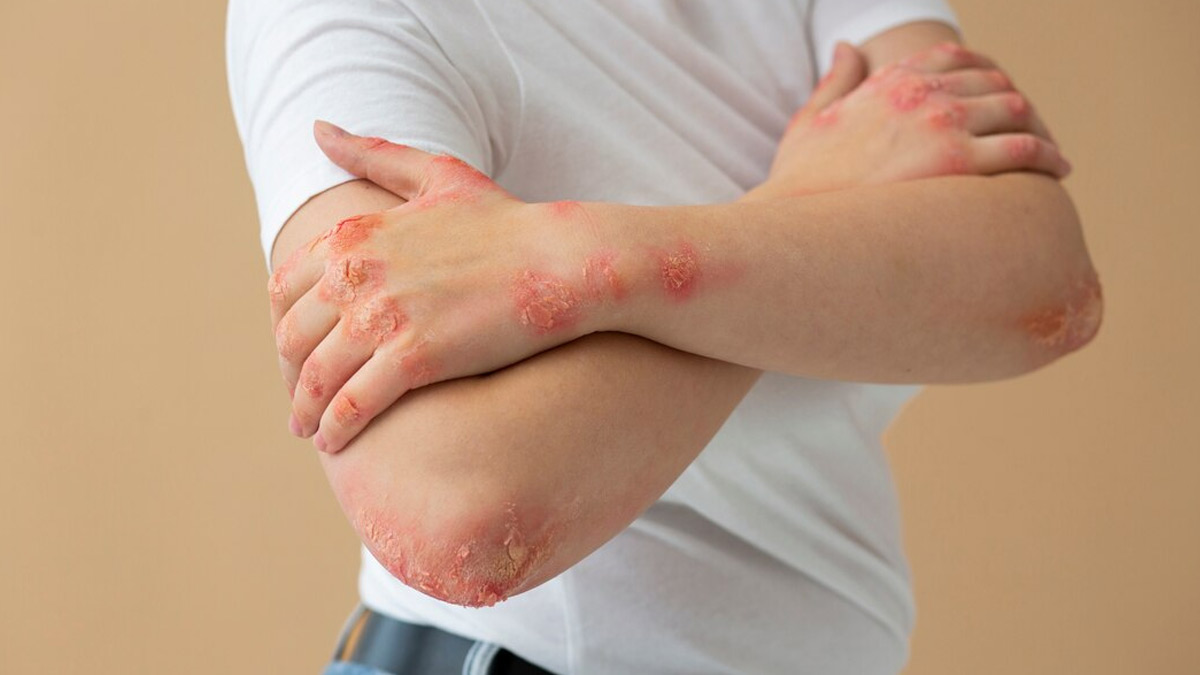
Tinea refers to a group of fungal diseases. Ringworm, athlete's foot, and jock itch are all examples of tinea infections. These infections are rarely dangerous, but they can be painful. They can be contracted by touching an infected person, coming into contact with damp surfaces like shower floors, or even via a pet.
Tinea can affect many areas of the body. Despite its name, tinea is caused by a type of fungus known as dermatophytes. In an interaction with only my health, Dr SK Gupta, Dermatologist, DMCH, Drabhnaga, Bihar, explained all about tinea infection.
Causes of Tinea
Tinea is highly contagious and can be caused by different species of fungi. The common sources of infection include:
- Direct skin-to-skin contact with an infected person can spread tinea.
- Contact with infected animals, especially pets like cats and dogs, can transmit tinea.
- Sharing personal items like towels, combs, or clothing with an infected person can lead to tinea.
- Fungi thrive in warm and moist conditions, making places like locker rooms and swimming pools potential sources of infection.
Also read: Tinea : How To Prevent This Fungal Infection In Summers?
Types of Tinea Infections
What types Tinea infects your body’s skin:
- Affecting the body's skin, this type often appears as circular, red, and scaly rashes.
- Found in the groin area, it causes red, itchy rashes and is more common in men.
- Affecting the feet, it causes itching, burning, and peeling of the skin.
- Primarily affecting the scalp and hair, it is more common in children and may cause bald patches.
- Affects the nails, causing them to become discolored, thickened, or brittle.

Symptoms of Tinea
As per Dr Gupta, following are the symptoms of tinea:
- Itchy and red patches on the skin.
- Circular or ring-shaped rashes.
- Scaling, peeling, or cracking of the skin.
- Inflamed and blistered areas.
- Discolouration or brittleness of nails (in the case of onychomycosis).

Treatment of Tinea
- Topical Antifungal Medications: “Over-the-counter creams, ointments can be effective for mild cases. Bathing with Potassium permanganate mixed with water can help when infection turns severe,” said Dr Gupta.
- Oral Antifungal Medications: For more severe or persistent infections, a doctor may prescribe oral antifungal medications.
- Keeping the Area Clean and Dry: Proper hygiene, including regular bathing and keeping the affected area dry, can aid in recovery and prevent the spread of infection.
- Avoiding Tight Clothing: Wearing loose-fitting, breathable clothing can help reduce moisture and promote healing.
- Isolating Infected Pets: If the source is identified as a pet, seek veterinary care to treat the animal's infection and prevent re-infection.
- Seeking Professional Advice: If symptoms persist or worsen, consult with a healthcare professional or dermatologist for a proper diagnosis and treatment plan.
Also read: Fungal Infection: Types And Prevention Of A Global Threat
Tinea, while uncomfortable and contagious, is a treatable fungal infection. Timely intervention, proper hygiene, and adherence to treatment can help manage symptoms and prevent the spread of the condition. If you suspect you have tinea or experience persistent skin issues, consult with a dermatologist for an accurate diagnosis and tailored treatment approach.
Also watch this video
How we keep this article up to date:
We work with experts and keep a close eye on the latest in health and wellness. Whenever there is a new research or helpful information, we update our articles with accurate and useful advice.
Current Version